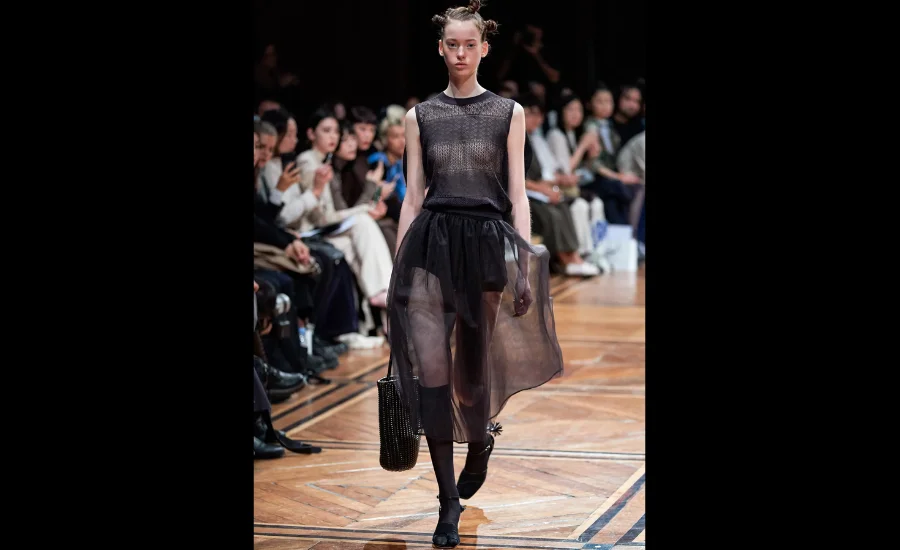In the dynamic and ever-evolving world of fashion, a new trend known as “beriful”—a blend of “beautiful” and “beneficial”—is gaining significant traction. This groundbreaking concept transcends traditional notions of style by integrating aesthetics with sustainability, addressing the needs of today’s environmentally conscious consumers. The essence of beriful lies in the belief that fashion should not only be visually appealing but also adhere to high ethical and environmental standards.
At its core, beriful fashion embodies a holistic approach where beauty is paired with responsibility. It emphasizes that clothing should be crafted with an awareness of both its visual impact and its ecological footprint. This approach is grounded in several key principles, including the use of sustainable materials, commitment to fair labor practices, and innovative design strategies.
Sustainable materials are fundamental to the beriful philosophy. By choosing fabrics that are eco-friendly—such as organic cotton, bamboo, and hemp—beriful fashion minimizes environmental harm. These materials are produced with lower chemical inputs, reduced water usage, and a smaller carbon footprint, ensuring that the garments not only look good but also contribute positively to the planet. Organic cotton, for instance, is cultivated without harmful pesticides or synthetic fertilizers, resulting in a purer, safer product that supports environmental health.
In addition to material choices, responsible manufacturing practices are crucial to beriful fashion. This involves a commitment to fair labor conditions, where workers are treated with dignity, receive fair wages, and work in safe environments. Such practices enhance the overall integrity of the clothing, allowing consumers to take pride in their purchases while supporting positive social impact.
Moreover, transparency in production processes is a vital component of the beriful movement. Modern consumers are increasingly demanding detailed information about how and where their clothes are made. Beriful brands meet this demand by providing clear insights into their supply chains, enabling shoppers to make informed choices that align with their values. This level of transparency sets new standards in the industry, encouraging continuous innovation and a reduction in environmental impact.

Innovative design also plays a key role in the beriful trend. Designers are embracing upcycling and recycling techniques, transforming existing materials and waste into new, stylish products. These methods help reduce waste and offer unique fashion options that are both creative and ethical. Additionally, the rise of modular and multifunctional clothing demonstrates how versatility and practicality can be combined with sustainability. Garments designed to be worn in multiple ways extend their usability and reduce the need for excessive consumption.
Overall, the beriful trend is reshaping the future of fashion by blending aesthetic appeal with environmental and ethical considerations. By embracing sustainable materials, responsible production practices, and innovative design, this movement not only responds to contemporary consumer demands but also paves the way for a more sustainable and conscious fashion industry.
Eco-Friendly Textiles: The Cornerstone of Responsible Fashion

Central to the beriful fashion movement is the widespread adoption of sustainable fabrics, marking a significant departure from conventional practices in favor of more environmentally conscious materials. This shift is driven by an increasing consumer demand for transparency and sustainability within the fashion industry, leading to a transformative change in how clothing is designed, produced, and consumed on a global scale.
One of the standout examples of a beriful fabric is organic cotton. This material epitomizes the fusion of aesthetic appeal with practical benefits. Organic cotton is cultivated without the use of harmful pesticides or synthetic fertilizers, which significantly reduces its environmental impact. By avoiding these chemicals, organic cotton production helps to preserve soil health and water quality, while also reducing the overall carbon footprint. The result is a fabric that is not only kinder to the environment but also offers a cleaner and safer option for consumers. Its natural softness and breathability make it a versatile choice suitable for a wide range of clothing, from casual wear to more refined and elegant pieces. Organic cotton’s popularity in beriful fashion underscores its role in promoting both comfort and environmental stewardship.
In addition to organic cotton, bamboo and hemp fabrics are gaining prominence within the beriful trend. Bamboo is celebrated for its exceptional softness and breathability, characteristics that make it well-suited for everyday apparel as well as activewear. Its rapid growth and low water needs contribute to its status as a sustainable material. Bamboo’s natural antibacterial properties and moisture-wicking capabilities further enhance its appeal, making it a practical and eco-friendly choice for modern consumers.
Similarly, hemp is emerging as a crucial fabric in the beriful movement due to its durability and minimal environmental footprint. Hemp is known for its strength and resilience, which makes it a long-lasting option for clothing. Over time, hemp fabric becomes softer with each wash, enhancing its comfort while maintaining its structural integrity. The low environmental impact of hemp cultivation—due in part to its ability to grow quickly with minimal pesticide use and water—aligns well with the principles of sustainability and ethical fashion.
Both bamboo and hemp fabrics play a significant role in advancing the sustainability agenda within the fashion industry. They offer consumers stylish and responsible choices, contributing to a broader movement toward more eco-friendly and ethical fashion practices. By integrating these materials into their collections, brands are not only meeting the growing demand for sustainable products but also helping to shape a more conscientious and environmentally responsible fashion landscape.
Overall, the emphasis on sustainable fabrics like organic cotton, bamboo, and hemp highlights a fundamental shift in the fashion industry. This movement toward beriful fashion reflects a commitment to reducing environmental impact, enhancing product transparency, and promoting ethical manufacturing practices. As consumers continue to prioritize sustainability, the adoption of these eco-friendly materials is set to play an increasingly important role in defining the future of fashion.Responsible Manufacturing: Promoting Fairness and Transparency
Sustainable Fabrics: The Foundation of Ethical Fashion
Beriful clothing goes beyond the choice of materials to embrace ethical production practices that address every stage of a garment’s lifecycle, from sourcing raw materials to the final manufacturing process. A key principle in these practices is the commitment to fair labor conditions. Ensuring that every worker involved in production is treated with dignity and paid fairly not only promotes social justice but also enhances the integrity of the product, giving consumers a sense of pride in their purchases.
Additionally, transparency and accountability are crucial elements of the beriful fashion movement. Modern consumers increasingly demand comprehensive information about the origins and manufacturing processes of their clothing. In response, beriful brands provide detailed insights into their supply chains, enabling shoppers to make well-informed choices. By setting new benchmarks for transparency and continually striving to minimize their environmental impact, these brands are driving positive change within the industry.
Ethical Production Practices: Ensuring Fairness and Transparency
Beriful clothing extends beyond material selection into the realm of ethical production practices, encompassing the entire lifecycle of clothing from raw material sourcing to manufacturing. A cornerstone of these practices is the commitment to fair labor conditions, ensuring that all workers in the production chain are treated with respect and receive fair wages. This commitment fosters a positive community impact and enhances product integrity, allowing consumers to feel proud of their purchases.
Transparency and accountability are also vital components of beriful fashion. Today’s consumers seek detailed information about how and where their clothes are made. Beriful brands respond to this demand by offering clear, detailed insights into their supply chains, thus allowing shoppers to make informed decisions. These practices set new industry standards, urging brands to continuously innovate and reduce their environmental impact.
Innovative Design: Fostering Creativity and Sustainability
Innovative design is crucial in beriful fashion, blending creativity with sustainability to meet the modern consumer’s needs. Upcycling and recycling are particularly notable trends within this sphere. Upcycling transforms existing materials into new products while recycling converts waste into usable textiles. These methods help minimize environmental impact and waste, offering consumers unique, expressive fashion choices that stand out in both style and ethical substance.
Moreover, the rise of modular and multifunctional clothing showcases the adaptability and practicality of beriful fashion. These designs provide numerous styling options while advocating for a minimalist, thoughtful approach to consumption. For instance, a single garment might be styled as a skirt, top, or tunic, enabling various looks and reducing the need for multiple pieces. This approach not only aligns with the sustainable ethos of beriful but also enhances the garment’s utility and lifespan, supporting a more sustainable fashion system.
Creative Design: Merging Innovation with Sustainability

Innovative design plays a pivotal role in beriful fashion, merging creativity with sustainability to address the demands of today’s eco-conscious consumers. Key trends in this area include upcycling and recycling. Upcycling involves repurposing existing materials into new products, while recycling transforms waste into reusable textiles. These practices significantly reduce environmental impact and waste, offering consumers distinctive and ethically mindful fashion options.
Additionally, modular and multifunctional clothing is gaining prominence within the beriful movement. These designs are both adaptable and practical, providing multiple styling possibilities and promoting a minimalist approach to fashion. For example, a single piece of clothing can be reconfigured into various styles, such as a skirt, top, or tunic. This not only supports the sustainable values of beriful fashion but also extends the garment’s versatility and lifespan, contributing to a more eco-friendly fashion system.
Final Words
In the evolving landscape of fashion, the beriful trend is redefining style by merging aesthetic appeal with sustainability. This innovative concept emphasizes that beauty in fashion should be paired with environmental and ethical responsibility. Central to beriful fashion is the use of sustainable materials like organic cotton, bamboo, and hemp, which minimize ecological impact while offering superior comfort and durability. Ethical manufacturing practices, including fair labor conditions and transparent production processes, are also pivotal, ensuring that consumers can make informed and conscientious choices. Additionally, beriful fashion champions creative design through upcycling, recycling, and modular clothing, which reduce waste and enhance versatility. Overall, beriful represents a transformative shift towards a more responsible and forward-thinking fashion industry.
FAQs
What is beriful fashion?
Beriful fashion combines aesthetics with sustainability. It focuses on creating visually appealing clothing that is also environmentally friendly and ethically produced.
How does beriful fashion differ from traditional fashion?
Unlike traditional fashion, which may prioritize style over sustainability, beriful fashion integrates eco-friendly materials and ethical practices, ensuring that both the appearance and production of garments are responsible.
What materials are commonly used in beriful fashion?
Common materials include organic cotton, bamboo, and hemp. These fabrics are chosen for their lower environmental impact and their ability to be produced sustainably.
Why is organic cotton important in beriful fashion?
Organic cotton is cultivated without harmful pesticides or synthetic fertilizers, which reduces environmental damage and supports healthier soil and water systems.
How does beriful fashion ensure fair labor practices?
Beriful brands commit to fair labor practices by providing safe working conditions, fair wages, and ethical treatment for all workers involved in the production process.
What role does transparency play in beriful fashion?
Transparency is crucial in beriful fashion. Brands provide detailed information about their supply chains and manufacturing processes, allowing consumers to make informed choices about their purchases.
How does beriful fashion address waste and sustainability?
Beriful fashion employs upcycling and recycling techniques to repurpose materials and reduce waste. Modular and multifunctional designs also extend the usability of garments.
What are modular and multifunctional clothing designs?
These designs allow a single piece of clothing to be worn in multiple ways, such as a dress that can be transformed into a top or skirt. This approach promotes versatility and reduces the need for excessive consumption.
How can consumers support beriful fashion?
Consumers can support beriful fashion by choosing clothing from brands that prioritize sustainability and ethical practices, and by adopting a more mindful approach to their fashion consumption.
What are the long-term benefits of adopting beriful fashion?
Adopting beriful fashion promotes environmental sustainability, supports ethical labor practices, and encourages innovation in design. It helps drive positive change in the fashion industry and fosters a more responsible consumer culture.
